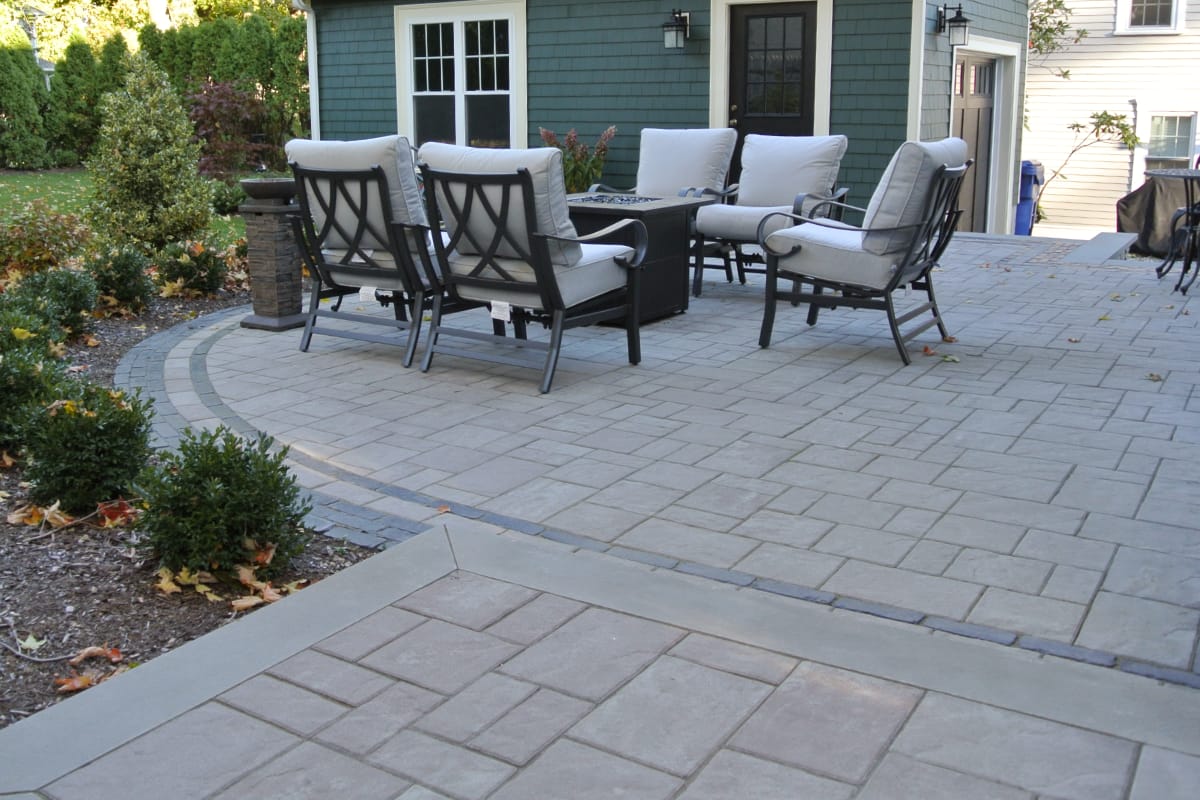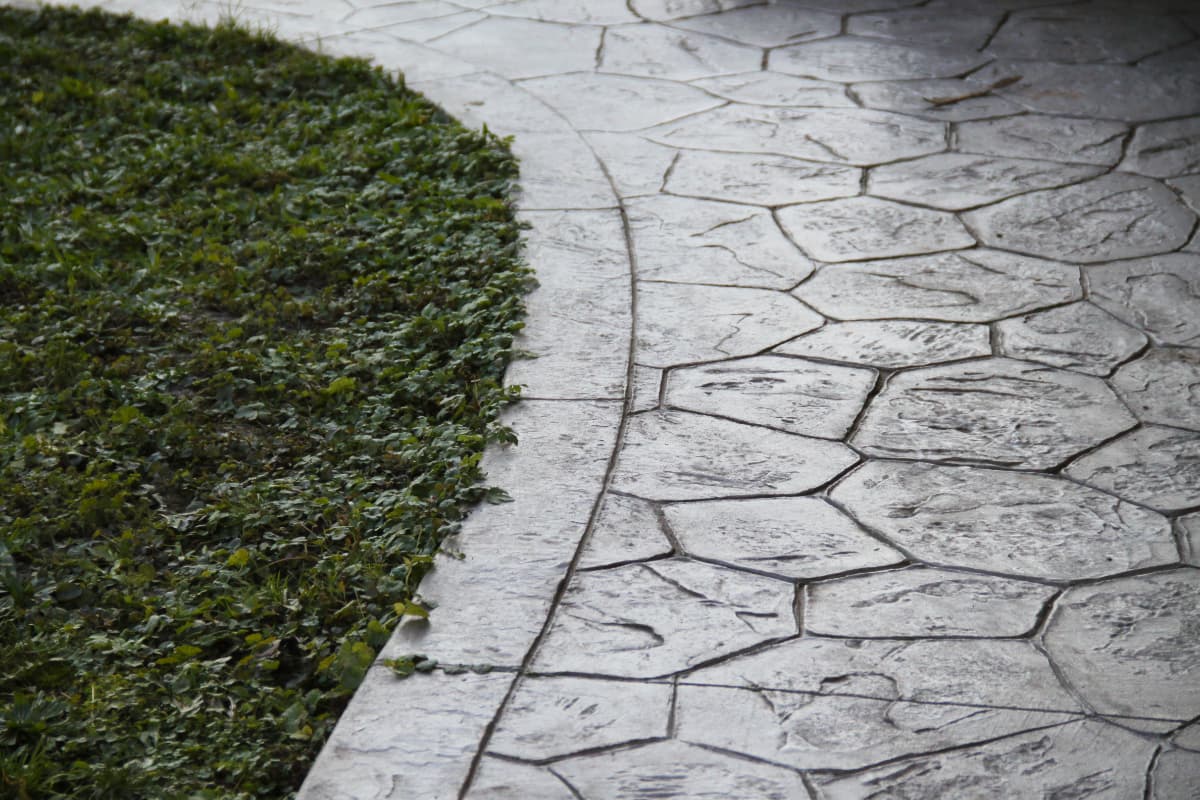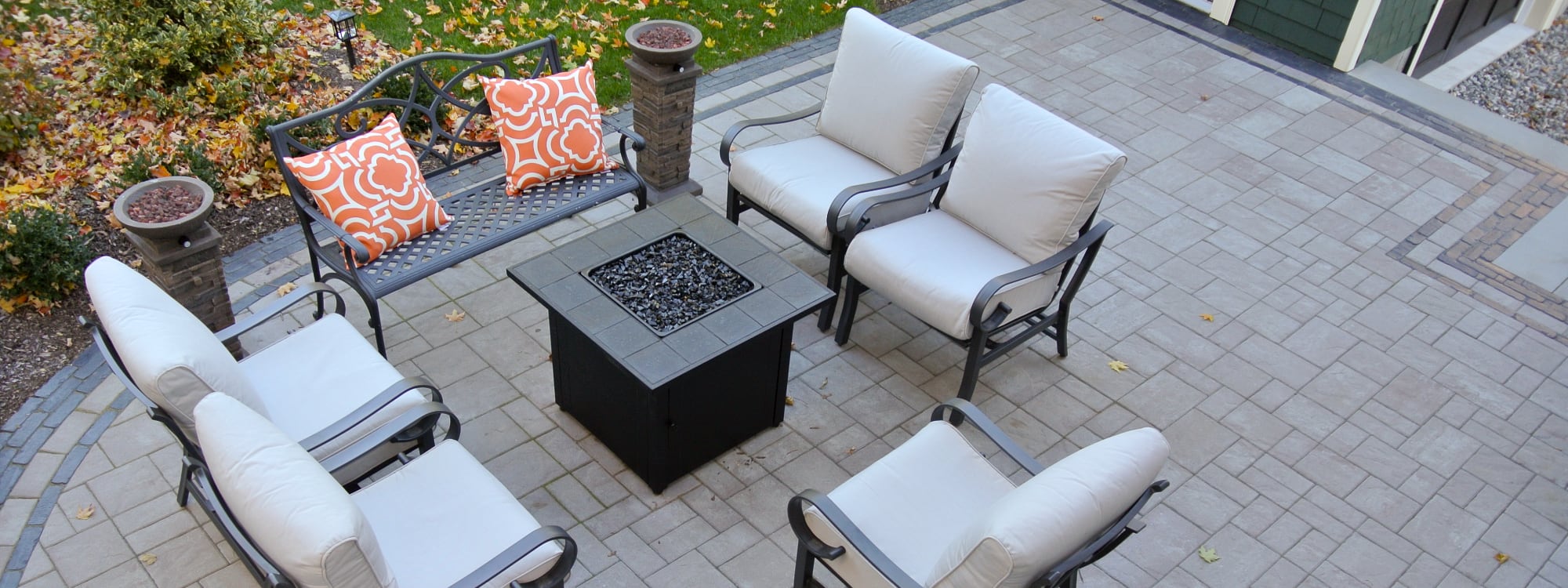As a homeowner, you understand the value of a beautiful and functional outdoor living space to enjoy Rhode Island summers. Two popular options that often come up are paver patios and stamped concrete patios. While both will accomplish a functional patio space, there are distinct differences to consider before making your decision.
How Paver Patios Stack Up
A paver patio is a solid and long-lasting outdoor area constructed with interlocking paving stones or concrete pavers. These pavers are carefully laid over a well-prepared crushed stone base, creating a sturdy and level foundation. One of the standout benefits of paver patios is the incredible design versatility they offer.

The Pros of Paver Patios
- Unmatched Design Flexibility: Pavers come in a vast array of materials, colors, shapes, and patterns, allowing you to craft a truly one-of-a-kind outdoor living space tailored to your style.
- Superior Durability: Paver stones are engineered to withstand the harshest New England winters, resisting cracking and heaving even after decades of freeze-thaw cycles.
- Low Maintenance: Unlike wood decks, paver patios require minimal upkeep. A simple sweep or occasional wash is all it takes to keep them looking pristine.
The Cons of Paver Patios
- Potentially Higher Initial Cost: While a wise long-term investment, paver installations can have higher upfront material and labor costs compared to stamped concrete.
- Professional Installation Required: Proper base preparation and technical masonry skills are necessary, making paver patios a job best left to experienced professionals.
How Stamped Concrete Patios Compare
Stamped concrete patios involve pouring a concrete slab and imprinting patterns or textures into the surface while it’s still wet. This process creates the appearance of traditional paving materials like brick, stone, or wood, but with a seamless concrete base.

The Pros of Stamped Concrete
- Affordable Upfront Cost: Stamped concrete is generally more cost-effective upfront compared to paver patios, making it an appealing option for budget-conscious homeowners.
- Quick Installation: Pouring and stamping concrete is a relatively fast process, allowing for a speedy installation timeline.
- Seamless Surface: The continuous concrete surface eliminates the need for grout lines or gaps, creating a smooth and uniform look.
The Cons of Stamped Concrete
- Limited Design Options: While stamped patterns can mimic other materials, the design choices are more restricted compared to the nearly limitless possibilities with pavers.
- Potential for Cracking: Over time, stamped concrete can develop cracks or chips, compromising its appearance and requiring costly repairs or resurfacing.
- Ongoing Sealing Required: To maintain its color and protect against staining, stamped concrete must be regularly resealed, adding to the long-term maintenance costs.
What’s the Verdict?
When it comes to creating a beautiful and enduring outdoor living space, both paver patios and stamped concrete offer compelling options. However, for homeowners seeking unparalleled design flexibility, superior durability, and truly low-maintenance living, paver patios are the clear choice for a lasting investment in your Rhode Island home.
Still unsure which option is right for you? Take advantage of our free, no-obligation consultation and 3D design rendering to see how a paver patio will look at your home.
Start Your Free 3D Design Consultation

